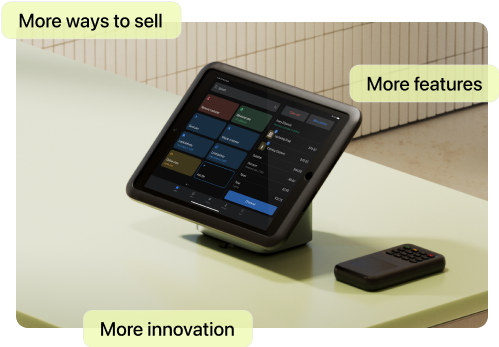When a single container ship blocked the Suez Canal in 2021, it didn’t only create a local marine traffic jam—it exposed the fragile interconnections of worldwide commerce. Within days, companies from Bangkok to Boston faced product and supply shortages, delayed deliveries, and millions of dollars in losses.
Today’s global supply chains span continents, involve countless suppliers, and rely heavily on digital systems and automation. This complexity enables unprecedented efficiency and global reach, but it also comes with many vulnerabilities. From cyberattacks to extreme weather events, threats facing modern supply chains are both more varied and more severe than ever. Even though the world quickly recovered from the Suez blockage, the incident illustrates why supply chain risk management is indispensable for businesses both big and small.
What is supply chain risk management?
Supply chain risk management (SCRM) identifies, assesses, and mitigates potential risk factors that could disrupt supply chain operations and pose a threat to business continuity. It includes examining both internal supply chain risks, like equipment failures or process bottlenecks, as well as external risks, such as natural disasters, geopolitical tensions, and supply chain attacks.
As Erin Chiang, supply chain planning lead at Shopify, explains, “In an ideal world, supply chains run the smoothest when there is long-term certainty, or at least some degree of predictability and reliability.” Addressing risks with a coherent risk management program allows you to build some predictability into your system. A good SCRM strategy anticipates what could go wrong at any point, from sourcing to point of sale, helping companies save time and money that they would otherwise have to spend cleaning up avoidable messes.
Common supply chain risks
- Global events and geopolitical tensions
- Supply chain attacks and cybersecurity threats
- Natural disasters and environmental risks
- Consumer demand fluctuations
- Transportation and labor disruptions
- Physical security threats
The entire supply chain ecosystem faces a vast array of threats that can roil logistics worldwide. Understanding these risks and their scale and scope is crucial for developing effective preventive strategies and mitigation plans for a variety of supply chain issues.
Global events and geopolitical tensions
Potential risks arising from global events might include changes to tariff regimes, trade wars, military conflict, and civil unrest. “It could be like when the Suez Canal was blocked for a while,” Erin says. “There was also a Red Sea crisis where shipping containers were being attacked,” she adds, referring to a number of commercial shipping hijackings in recent years linked to turmoil in Yemen.
These external supply chain risks can disrupt air travel and shipping routes, including vital strategic bottlenecks like the Suez Canal, the Red Sea, and the Panama Canal. Although the effects of overseas events might not be immediately felt in the US, they can create a ripple effect that leads to difficulties for suppliers closer to home.
Supply chain attacks and cybersecurity threats
Supply chains have become increasingly reliant on information and communications technology (ICT) and remote access capability to manage orders, distribution, and inventory. This reliance creates new vulnerabilities. Ransomware and malware attacks can shut down information systems used in production and distribution. Breaches of supply chain data can expose a business’s proprietary data or sensitive customer information, leading to reputational damage and even litigation.
Natural disasters and environmental risks
Extreme weather events, as well as natural disasters like earthquakes and wildfires, can significantly impair supply chain operations. These environmental catastrophes can shut down manufacturing facilities, block transportation routes, and damage critical infrastructure for weeks or months, reverberating far beyond the immediate disaster zone.
Consumer demand fluctuations
Managing supply chain risk also involves predicting and addressing changes in customer behavior and demand. Unexpected spikes or declines in demand can strain vendor relationships and affect inventory levels across multiple suppliers and locations, impeding the flow of everything from raw materials to finished products. It’s important to note that consumer demand fluctuations can at times spring from other disruptive events—for example, the spike in demand for toilet paper at the onset of the COVID-19 pandemic.
Transportation and labor disruptions
Labor strikes and transportation issues (like railway breakdowns) represent a significant risk to supply chains. These disruptions can halt operations at key ports and along shipping routes, creating cascading effects throughout global supply chains, from sourcing to storefronts.
Physical security threats
On a smaller scale, supply chains face physical security risks like theft, tampering, or irreparable damage. These incidents can occur at any point in the supply chain, from warehouse break-ins and cargo theft during transit to product tampering at distribution centers and retail theft. These physical threats can also harm ecommerce business operations in the form of delivery fraud and fraudulent returns.
5 steps for developing an SCRM process
- Build a specialized team
- Identify risks
- Assess impact
- Implement mitigation strategies
- Continuous monitoring
Your business’s SCRM process needs to account for what you sell, whether you sell primarily online or through a physical storefront. This is irrespective of where your products are sourced or where your warehouses and customers are located. Regardless of these elements, building an effective SCRM framework and risk-aware culture involves these five steps:
1. Build a specialized team
Develop a dedicated SCRM team that includes representatives from procurement, operations, IT, and security. This team should understand the company’s supply chain operations on both micro- and macro-levels, and have the authority to implement supply chain risk mitigation strategies.
2. Identify risks
The core of an effective SCRM plan lies in identifying external risks and internal vulnerabilities. Risk identification starts with a thorough risk assessment that considers both of these types of supply chain risk factors, including supplier location, the locations of your suppliers’ suppliers, transportation routes, as well as political and environmental stability along these routes. As part of this process, you should also examine ICT components and software, the integrity of their security, and the same for any third-party vendors and supply chain partners.
3. Assess impact
Once you’ve identified potential vulnerabilities, look at how likely they are to occur and both their short- and long-term impact on supply chain operations. Software solutions like predictive and prescriptive analytics, as well as data modeling, can help in this area with methodologies like risk scoring and scenario analysis.
For example, a company might assess that a key supplier located in a hurricane-prone region has a 30% annual probability of experiencing weather-related supply chain disruptions that result in production delays of as long as 10 days. This data might be drawn from historical weather records, coupled with a look at the average number of days such weather events have resulted in production stoppages. Let’s say the daily revenue impact is $1,800 a day. Multiplied by 10 days, that loss would be about $18,000 in lost revenue during this hypothetical event.
4. Implement mitigation strategies
After risk assessment, developing mitigation strategies comes next. In keeping with the example above, Erin recommends supplier diversification as a key mitigation strategy for product-based businesses because dependence on a single supplier can disrupt operations indefinitely when disaster strikes. “Diversifying who your suppliers are is important, so if something goes wrong with one supplier, you have an opportunity to say, OK, they’re running into trouble,” she says. “You immediately flip to another supplier you’ve already vetted.”
Additional mitigation strategies can include maintaining reserve stocks of critical components or popular products, establishing regular check-ins and performance reviews with upstream suppliers, investing in tracking systems with real-time shipment monitoring, and developing backup plans that include secure data storage, employee security training, warehouse cameras and access controls, and pre-arranged contracts with backup shippers.
5. Continuous monitoring
SCRM is an ongoing, systematic process that requires businesses to maintain close oversight of supply chain operations and regularly review policies and procedures for efficacy. This should involve implementing supply chain visibility tools to track key performance indicators (KPIs), conducting regular supplier audits, and building strong relationships with vendors that have their own adequate security culture.
Supply chain risk management FAQ
What are the six main types of risk in supply chain management?
The six main types of risk in supply chain management are:
1. Global events and geopolitical tensions
2. Supply chain attacks and cybersecurity threats
3. Natural disasters and environmental risks
4. Fluctuations in consumer demand
5. Transportation and labor issues
6. Physical supply chain security threats like theft
How can you solve supply chain risks?
The goal of SCRM is to prepare for and mitigate risks by building resilience, maintaining flexibility, and anticipating disruptions when they inevitably occur. Through risk identification, assessment, mitigation planning, and continuous monitoring, companies can leverage SCRM from a defensive necessity to a potential competitive advantage.
What is the primary goal of supply chain risk management?
The primary goal of supply chain risk management is to prepare the organization to anticipate risks to the supply chain and deal with them efficiently when they occur.







